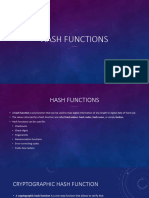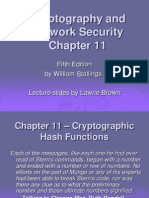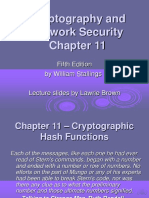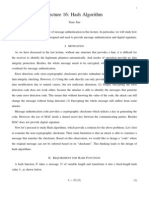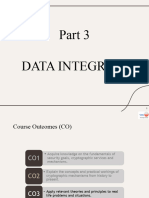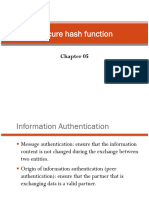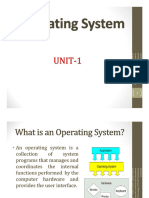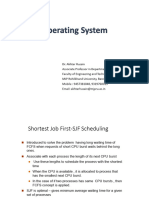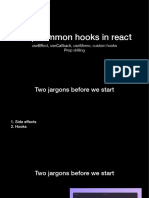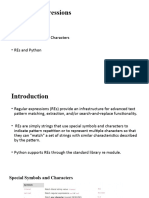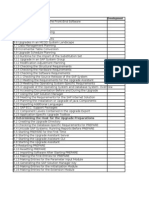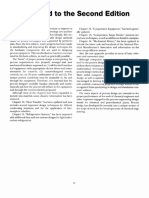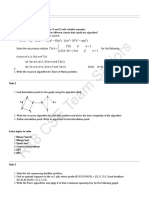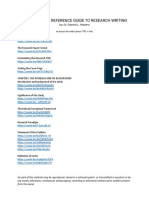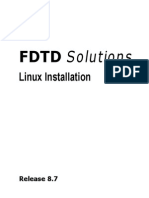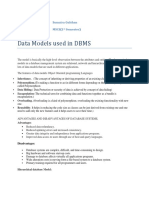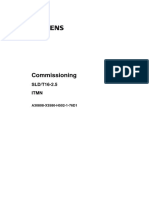0% found this document useful (0 votes)
164 views43 pagesHash Function
The document discusses hash functions and their properties. It begins by defining a hash value as a condensed representation of an arbitrary message of fixed size. It then explains that a hash value acts as a "digital fingerprint" of the original document. The document notes that hashing is a one-way process without decryption, whereas encryption is two-way with encryption and decryption requiring a key.
Uploaded by
Adesh Kumar chaturvediCopyright
© © All Rights Reserved
We take content rights seriously. If you suspect this is your content, claim it here.
Available Formats
Download as PPT, PDF, TXT or read online on Scribd
0% found this document useful (0 votes)
164 views43 pagesHash Function
The document discusses hash functions and their properties. It begins by defining a hash value as a condensed representation of an arbitrary message of fixed size. It then explains that a hash value acts as a "digital fingerprint" of the original document. The document notes that hashing is a one-way process without decryption, whereas encryption is two-way with encryption and decryption requiring a key.
Uploaded by
Adesh Kumar chaturvediCopyright
© © All Rights Reserved
We take content rights seriously. If you suspect this is your content, claim it here.
Available Formats
Download as PPT, PDF, TXT or read online on Scribd
/ 43








